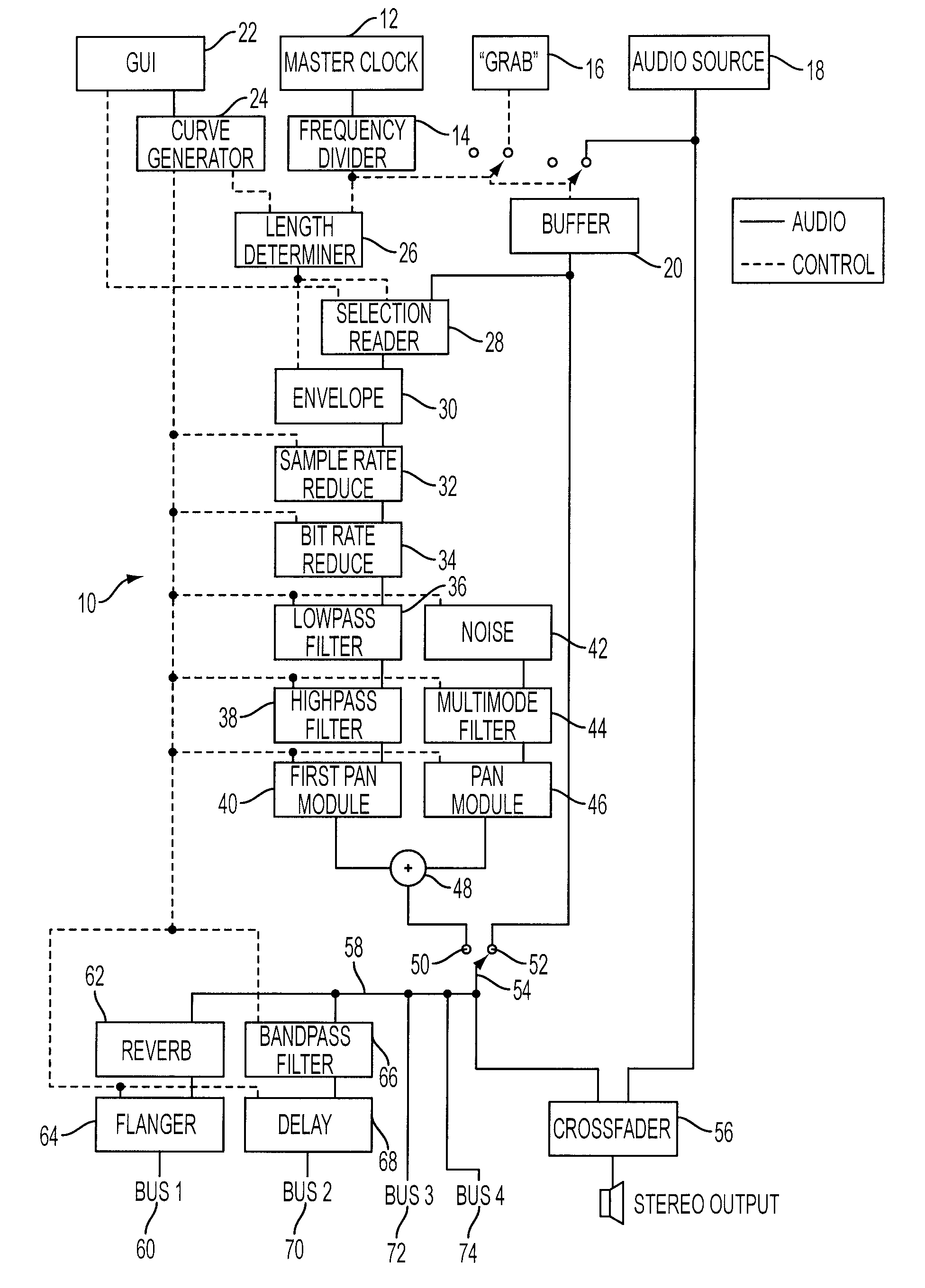Time varying processing of repeated digital audio samples in accordance with a user defined effect
a digital audio and user-defined effect technology, applied in the field of digital audio processing, can solve the problems of lack of mathematical and aesthetic qualities of the sounds created by the inventor's manual stutter edit technique, no software available to create a so-called “stutter edit” sound using digital audio, and random and generally unpredictable rearrangements
- Summary
- Abstract
- Description
- Claims
- Application Information
AI Technical Summary
Benefits of technology
Problems solved by technology
Method used
Image
Examples
Embodiment Construction
[0021]Turning to flow chart of FIG. 1, it will be seen that the Stutter Edit program works synchronously to produce the effect desired. Those connections which transmit audio signals are indicated by solid lines while connections transmitting control signals are shown as interrupted or dashed lines.
[0022]At the heart of the program system 10 is a master clock 12 which pulses and locks internally to a host environment sequencer (not shown). Every event generated by the system 10 can be synchronized to the master clock 12. The master clock 12 holds the tempo synchronization information for the entire system 10.
[0023]In the preferred embodiment, a frequency divider 14 is provided to convert the clock signals into timing intervals that can be used to generate desired effects. A “grab” switch 16 under control of signals from the frequency divider 14 acts to gate audio signals from an audio source 18 and to synchronize the storage of an audio segment of a selected musical interval in a bu...
PUM
 Login to View More
Login to View More Abstract
Description
Claims
Application Information
 Login to View More
Login to View More - R&D Engineer
- R&D Manager
- IP Professional
- Industry Leading Data Capabilities
- Powerful AI technology
- Patent DNA Extraction
Browse by: Latest US Patents, China's latest patents, Technical Efficacy Thesaurus, Application Domain, Technology Topic, Popular Technical Reports.
© 2024 PatSnap. All rights reserved.Legal|Privacy policy|Modern Slavery Act Transparency Statement|Sitemap|About US| Contact US: help@patsnap.com










